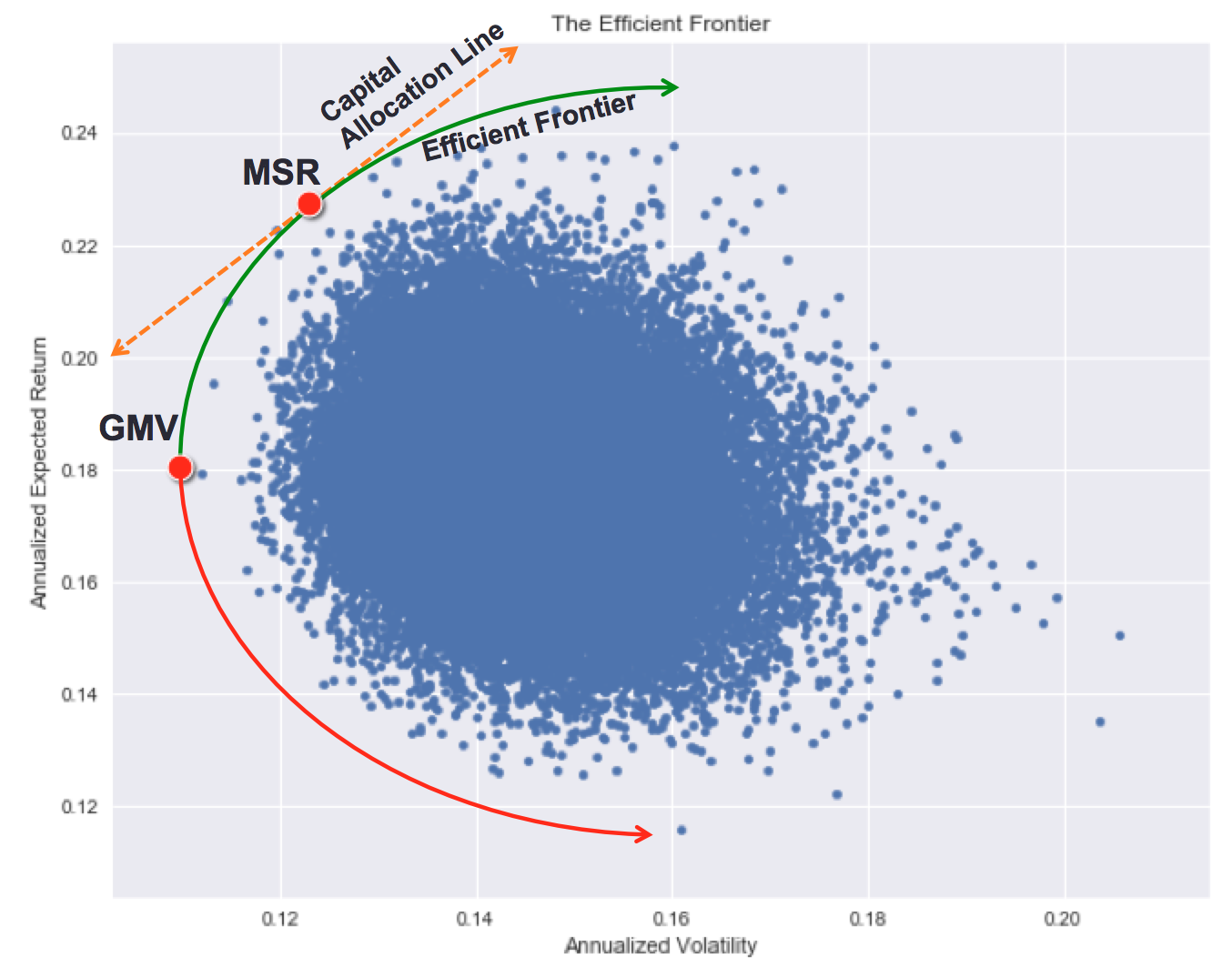Markowitz portfolios
Introduction to Portfolio Risk Management in Python

Dakota Wixom
Quantitative Analyst | QuantCourse.com
100,000 randomly generated portfolios

Sharpe ratio
The Sharpe ratio is a measure of risk-adjusted return.
To calculate the 1966 version of the Sharpe ratio:
$$ S = \frac{ R_a - r_f }{\sigma_a} $$
- S: Sharpe Ratio
- $ R_a $: Asset return
- $ r_f $: Risk-free rate of return
- $ \sigma_a $: Asset volatility
The efficient frontier

The Markowitz portfolios
Any point on the efficient frontier is an optimum portfolio.
These two common points are called Markowitz Portfolios:
- MSR: Max Sharpe Ratio portfolio
- GMV: Global Minimum Volatility portfolio

Choosing a portfolio
How do you choose the best portfolio?
- Try to pick a portfolio on the bounding edge of the efficient frontier
- Higher return is available if you can stomach higher risk
Selecting the MSR in Python
Assuming a DataFrame df of random portfolios with Volatility and Returns columns:
numstocks = 5
risk_free = 0
df["Sharpe"] = (df["Returns"] - risk_free) / df["Volatility"]
MSR = df.sort_values(by=['Sharpe'], ascending=False)
MSR_weights = MSR.iloc[0, 0:numstocks]
np.array(MSR_weights)
array([0.15, 0.35, 0.10, 0.15, 0.25])
Past performance is not a guarantee of future returns
Even though a Max Sharpe Ratio portfolio might sound nice, in practice, returns are extremely difficult to predict.
Selecting the GMV in Python
Assuming a DataFrame df of random portfolios with Volatility and Returns columns:
numstocks = 5
GMV = df.sort_values(by=['Volatility'], ascending=True)
GMV_weights = GMV.iloc[0, 0:numstocks]
np.array(GMV_weights)
array([0.25, 0.15, 0.35, 0.15, 0.10])
Let's practice!
Introduction to Portfolio Risk Management in Python

